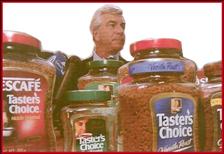 This is the time of year when season’s greetings, holiday and new year’s wishes, regardless of religion, culture, ethnic background or heritage, fill the air. A period when we spend lots of time and attention on cards, gifts, attending or hosting parties, dinners and otherwise gaining the 10 pounds we resolve to lose in the new year. I don’t want to ruin those traditions, so among the flurry of well-wishers, holiday revelers, frosty noses and smiling faces, let me join with others and wish you an enchanting and joyous holiday season, and a healthy, happy new year filled with wonder, challenge and excitement.
This is the time of year when season’s greetings, holiday and new year’s wishes, regardless of religion, culture, ethnic background or heritage, fill the air. A period when we spend lots of time and attention on cards, gifts, attending or hosting parties, dinners and otherwise gaining the 10 pounds we resolve to lose in the new year. I don’t want to ruin those traditions, so among the flurry of well-wishers, holiday revelers, frosty noses and smiling faces, let me join with others and wish you an enchanting and joyous holiday season, and a healthy, happy new year filled with wonder, challenge and excitement.
As many of you know, in years past I use to agonize over gifts to clients, colleagues, family and friends. A number of years ago, rather than sending people trinkets they never want or need; rather than feeling guilty I’ve forgotten someone or perhaps given the same thing I gave last year or, worse – gave you the gift you gave me!!! – I started my own tradition of sending a personalized note and making a contribution to a charitable organization of my choice in honor of family, friends, colleagues and acquaintances, and in memory of those we have lost. In that spirit, as I have done for some, I have made a donation to the St. Jude Children’s Research Hospital, and this year it seems somehow to be even more meaningful. Perhaps it is my way – my attempt – to find ways to let our children know there is more good than evil in the world. That good people don’t give up; won’t give up. That the battle may never end, but we will never resign ourselves to the way it is; never stop believing it can and will be better. At a time when so many of us might feel helpless to comfort each other.
To help, we need to find ways to make a difference – one step at a time. I know we can’t all change the world. But we might just be able to change a life or two or three. Yes, it’s corny. So what? We are already cool and so hip. We speak to each other in "tweets" and text messages, in language that accommodates the limitations of the technology – OMG that is sew kewl! So for the record, I’m OK with being traditional. Perhaps a little old-fashioned. We talk about random acts of kindness as if it were only a bumper sticker. Why be kind? Why help others? Why give? Not just this time of year, but as a part of who we are. Part of who we should be. Part of who we need to be to change the world.
Sure, maybe the homeless man will spend it on a beer – but maybe not. Yes, it’s true that someone may be embezzling money from the battered women’s shelter – but maybe they are not. What if – yes what if, each of us shows a little faith and kindness to others less fortunate – those who have so little. What if taking a moment to care pays more dividends than we care to believe; more than we know. The real inconvenient truth is that we often use failure as an excuse not to give or to help others who have less. Think about every person we honor because of their selfless dedication to helping others. We admire them not because they gave; we honor them because they never gave up. They don’t seek rewards or even recognition. They keep going, even when it seems impossible to make a difference. Our heroes often have little themselves, yet they give unselfishly to others. Adversity. Challenge. Humiliation. Their belief in helping others is steadfast. Beat them down, they get up and go on.
This year, we have been confronted by unspeakable images of horror – man’s inhumanity to man. I feel helpless to comprehend the tragedy in Newtown, Connecticut. Helpless against unimaginable sorrow. But we have also seen people caring for each other. As a community. The prayer vigils and outpouring of love and support in the hearts and minds of so many across the nation and the globe continues unabated. Don’t stop. When the cameras leave and the news coverage moves on – there are people who will still need your help, your love and support. We have seen or heard about natural disasters with unparalleled fury. But we have also seen the firefighters, ambulance personnel, emergency medical services, and so many others routinely risk their lives, no matter what the conditions, to rescue and save the lives of others – far too often at the risk of their own. And then there are the small acts of kindness, caught on camera unbeknownst to the good Samaritan – the image of a New York City police officer, giving shoes to a homeless man, shoes bought with his own hard-earned money.
Each of us should make a little more of an effort to help others. To give to those who are less fortunate, the thoughtfulness and help we would hope someone might give us if we needed it. Yes, even if we are not sure they will use it wisely or turn their lives around. Yes, even if we are disappointed or skeptical. Even if we are sure they won’t appreciate it. Have a little faith – this isn’t about religion. It is about tolerance and understanding and a willingness to accept that we may not know why some people are what they are, but we can help nonetheless. I don’t pretend to be a paradigm of virtue. I have walked past my share of homeless people, huddled in corrugated cardboard boxes, pretending to look the other way – avoiding their eyes so I’m not shamed into giving them a few dollars. But as I realized last year and each year that goes by, I spend more on a newspaper subscription or Starbucks or the new smart phone, than I am willing to give someone who is hungry or cold or alone . . . . . and I feel terrible. So now I’ve started to go back to those homeless, often helpless people – maybe not often enough, but when I do I feel better. It feels right. I like that feeling. Stupid me, I still don’t do it often enough. My father did, rest his soul. I should have learned from him. Hopefully it’s not too late. So I’m starting to pay more attention to what he never said, but always did. I’ve gotten better – but only a little. In this age of digital miracles, when communicating across the globe is as simple as the push of a few buttons, let’s not forget the miracles that happen face to face, person to person. The gift of kindness and compassion; of charity and community; of helping the needy and giving hope to the hopeless. This coming year, I will try again to be better. I will keep trying. I will also try to keep in touch in a more meaningful way and take the time that you need. Time is a precious gift. Something I value when it is given to me.
I also value the diversity of wonderful people I’ve come to know and care about over the years and throughout the world – you know who you are, and if you aren’t among those I’ve met, just send a signal and say "hello" – please. There is so much I still have to learn from each of you and so much we have to share with each other. So to family and friends, colleagues and acquaintances, clients and adversaries, those who know me far too well and those who don’t have a clue how they got on this email list, let me close by wishing each of you health, peace, comfort and joy this holiday season and in the year ahead. May those who love you come closer and those who dislike you forget why. Most of all, I wish all of you the extraordinary feelings of inner warmth and goodness that come with helping another . . . maybe changing another person’s life for the better . . . a person to whom you owe nothing and who expects nothing from you. Think what the world would be like if we all did that.
Warm regards for the holidays and best wishes for the new year. Sincerely,
– Joe Rosenbaum


 This is the time of year when season’s greetings, holiday and new year’s wishes, regardless of religion, culture, ethnic background or heritage, fill the air. A period when we spend lots of time and attention on cards, gifts, attending or hosting parties, dinners and otherwise gaining the 10 pounds we resolve to lose in the new year. I don’t want to ruin those traditions, so among the flurry of well-wishers, holiday revelers, frosty noses and smiling faces, let me join with others and wish you an enchanting and joyous holiday season, and a healthy, happy new year filled with wonder, challenge and excitement.
This is the time of year when season’s greetings, holiday and new year’s wishes, regardless of religion, culture, ethnic background or heritage, fill the air. A period when we spend lots of time and attention on cards, gifts, attending or hosting parties, dinners and otherwise gaining the 10 pounds we resolve to lose in the new year. I don’t want to ruin those traditions, so among the flurry of well-wishers, holiday revelers, frosty noses and smiling faces, let me join with others and wish you an enchanting and joyous holiday season, and a healthy, happy new year filled with wonder, challenge and excitement.
